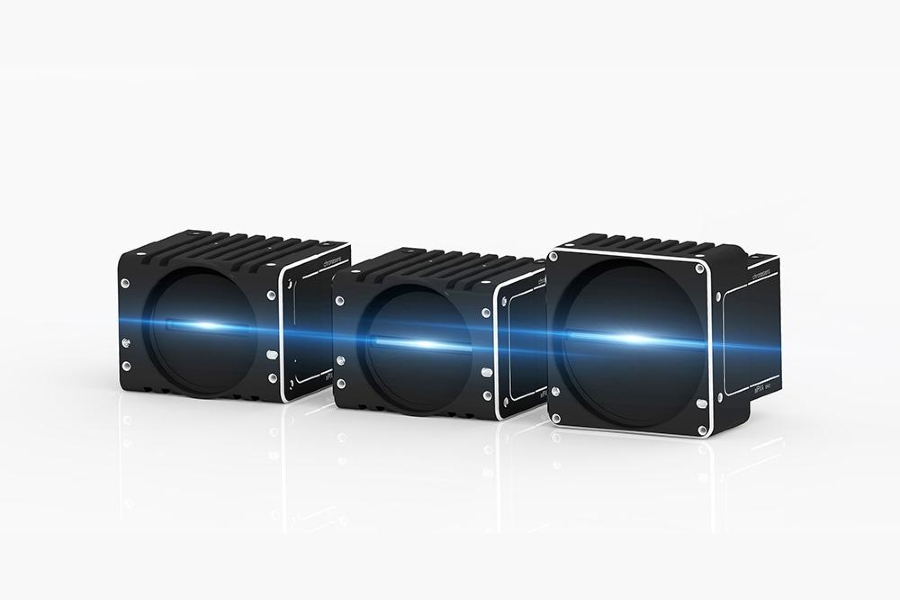Automated optical inspection (AOI) of wafer-based solar cells requires a combination of 2D and 3D imaging to detect imperfections in coatings and printing, and for the reliable characterisation of small surface defects.
AOI guarantees the highest yield for manufacturers by reducing inspection times and boosting throughput, while also ensuring maximum utilization of raw materials and resources. However, it is a complex process since solar cells have several layers that need inspection: front and back metallic electrodes, a silicon layer, and a textured surface with anti-reflective coating.
Chromasens, a world leader in line-scan imaging, meets the challenge with its full line of 2D and 3D line-scan cameras and LED illumination systems for AOI inspection. Chromasens cameras are unmatched in scanning surface conditions and geometry, and for detecting distortion, chips, saw marks, and contamination, all at extremely high rates. Chromasens’ advanced imaging engineering will find micro-cracks, which if undetected can result in the cell shattering during subsequent production steps.
In addition, Chromasens’ line-scan cameras offer the extremely high resolutions required for large cell formats and very thin finger widths, along with anti-blooming or autoexposure to avoid image saturation.
Compatibility with GigEVision and GenICam, along with compact footprints, make integrating Chromasens line-scan cameras into an existing or new AOI system simple, fast and cost-effective.
Here is a run-down of the latest Chromasens line-scan cameras:
- Chromasens allPIXA evo 8k line-scan cameras have a novel multi-line CMOS sensor featuring TDI options for colour or mono at high speed. Line rates of up to 90 kHz for 8k in full colour are possible with either Dual 10 GigE or CoaXPress interfaces. Line and frame trigger options, variable encoder input and colour conversion possibilities all make the allPIXA evo 8k the best choice for high-speed, high-resolution inspection applications. Filters in the near-infrared range enable the recognition of object features in the visible and NIR spectrum with one camera, a helpful feature in detecting micro-cracks.
- The Chromasens allPIXA SWIR is the company’s first short-wave infrared line-scan camera. The tiny footprint of the state-of-the-art InGaAs sensor allows it to be used throughout solar cell inspection production. It features an uncooled sensor with 512 or 1k resolution, excellent sensitivity, and a line rate of 40 kHz. GigE Vision and CameraLink interfaces that are GenICam compliant make it simple to integrate into existing AOI systems.
- Chromasens 3DPIXA 3D line-scan cameras are a unique combination of stereo line scan camera technology and fast 3D stereo computation. Offered in multiple configurations, 3DPIXA cameras acquire high-resolution colour images and 3D height maps with one device. 3DPIXA cameras 3D applications can be created directly with the support of common image processing libraries. Also, with the easy-to-integrate Chromasens 3D API, 3DPIXA images and 3D data are available for any other Windows software environment.





